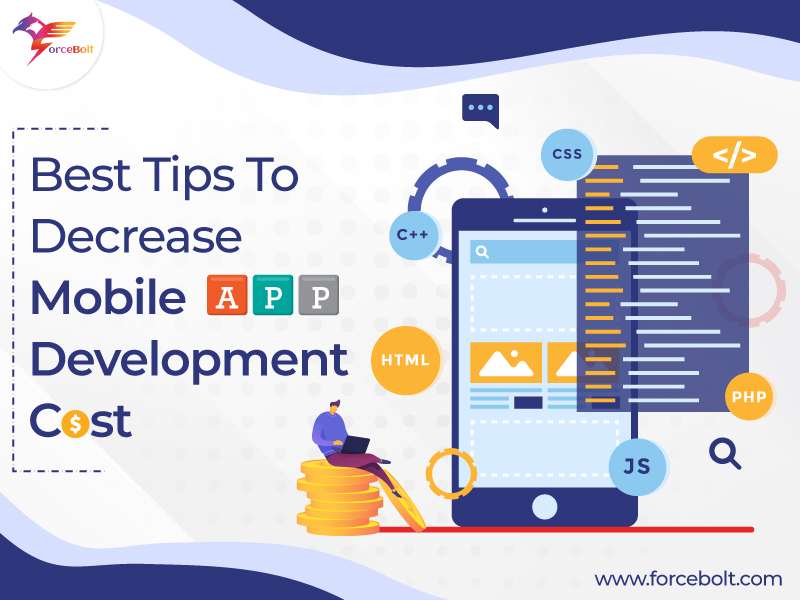Sharing is caring!
Want to order groceries online? There’s an application for it. Want to transfer money from one account to another without visiting the bank? Don’t worry; there’s an app for that as well. Undoubtedly, mobile applications are present everywhere. However, creating them is an expensive and time-consuming process. The cost of developing a mobile app varies from business to business. It depends on the features and functionality of a full stack development agency, the developers’ experience, the platforms you plan to build on, and many other considerations. Building a mobile app entails various processes and duties by designers, developers, quality assurance specialists, project managers, and other experts.
Regardless of your budget, however, mobile app development begins with some research. Therefore, you can better manage the entire process while saving time and money by conducting your research to support your app development plan.
So, how do you get started with it? Here are the top five techniques to cut app development costs without losing the project’s quality.
1. Research And Documentation
The quantity of features that a developer utilizes directly impacts app development expenses. Make sure your app needs are under your company objectives. The simplest method to do this is to write down what you want to accomplish with the production of the mobile app. It’s critical to have good documentation whether you build the app in-house or outsource it. This is because it can assist in ensuring that your development staff understands your business goals. Moreover, with meticulous documentation, mistakes and alterations will be less. Also, proper research will allow you to decide whether to add or delete a feature during the app development process.
2. Choose Cross-Platform Development
You’ll need to figure out how many platforms and devices you would like to support. It will significantly impact app development expenses. Therefore, it’s essential to base your choices on your research and company objectives. Native (Android and iOS) app development is costly, but it provides the most significant features and a better user experience. Progressive web apps are substantially less expensive and faster to develop, but they have many drawbacks. Furthermore, cross-platform development is the ideal solution if you want to launch your software on Google Play and Apple’s App Store without breaking the bank. This is because it just requires one codebase to be distributed across numerous platforms.
3. Follow UX And UI Guidelines
While it’s critical to consider the programming requirements, you can’t overlook the design. It’s vital to have an excellent UI and UX to encourage acceptance and regular use. Your development costs will rise if you use highly customized UIs with animation. Using conventional features such as buttons and navigation types, on the other hand, will be far less expensive. So, if you want to keep development costs low, customize just when it’s essential. If you’re creating a native or cross-platform app, make sure you meet Apple and Google’s rules.
4. Use Credible Tech Solutions
The technological stack collects programming languages, frameworks, and digital tools that programmers and other professionals utilize to create a complete product in the technology field. Since it defines the development workflow, style, complexity of app maintenance, and commercial risk, the tech stack significantly impacts the average cost of app creation. There are front-end and back-end components in every tech stack. However, some of the most used development tools perform admirably on both the client and server sides of the project. A tested tech stack can aid in optimizing the development process and reducing team resources.
5. Opt For a Minimum Viable Product (MVP)
MVP consists of the essential elements to help users carry out your startup’s principal idea. The MVP strategy is an aspect of Lean development that focuses on creating product versions, measuring the results, and then figuring out how to improve and profit from the product. Furthermore, an MVP isn’t about speeding up the development of an app. The method also aids in the creation and testing of a sales funnel. Consumer-critical choice factors, demand-specific features, and the expense of recruiting a new client should all be of primary concern to you. The top three examples of mobile applications that began with MVP are Facebook, Instagram, Uber.
The Bottom Line
For any full stack development agency developing a mobile application is costly. However, with the right team and methodology, you may potentially save money on mobile app development without sacrificing quality. The correct technology, adherence to guidelines, functionality optimization, careful development planning, and several other ideas from this guide can assist you in implementing your project and getting the most out of your investments.
Are you looking for a dependable and skilled team to achieve your business goals? Get in touch with ForceBolt’s full-stack developers, who will assist you in the best way possible and provide you with scalable solutions to accomplish all your business needs.

Abhishek Singh
Full Stack Technical Lead
A highly motivated Senior Full Stack Developer who is self-driven and actively looks for ways to contribute to the team. He possesses rich expertise and deep knowledge about a good software development process that includes documentation, testing, documentation, and collaboration. With solid communications and reasoning skills, he delivers high performance and quality in his projects. He is always open to assist other teams in understanding project requirements so that collaboration can happen in the best possible ways in an environment conducive to the business.













